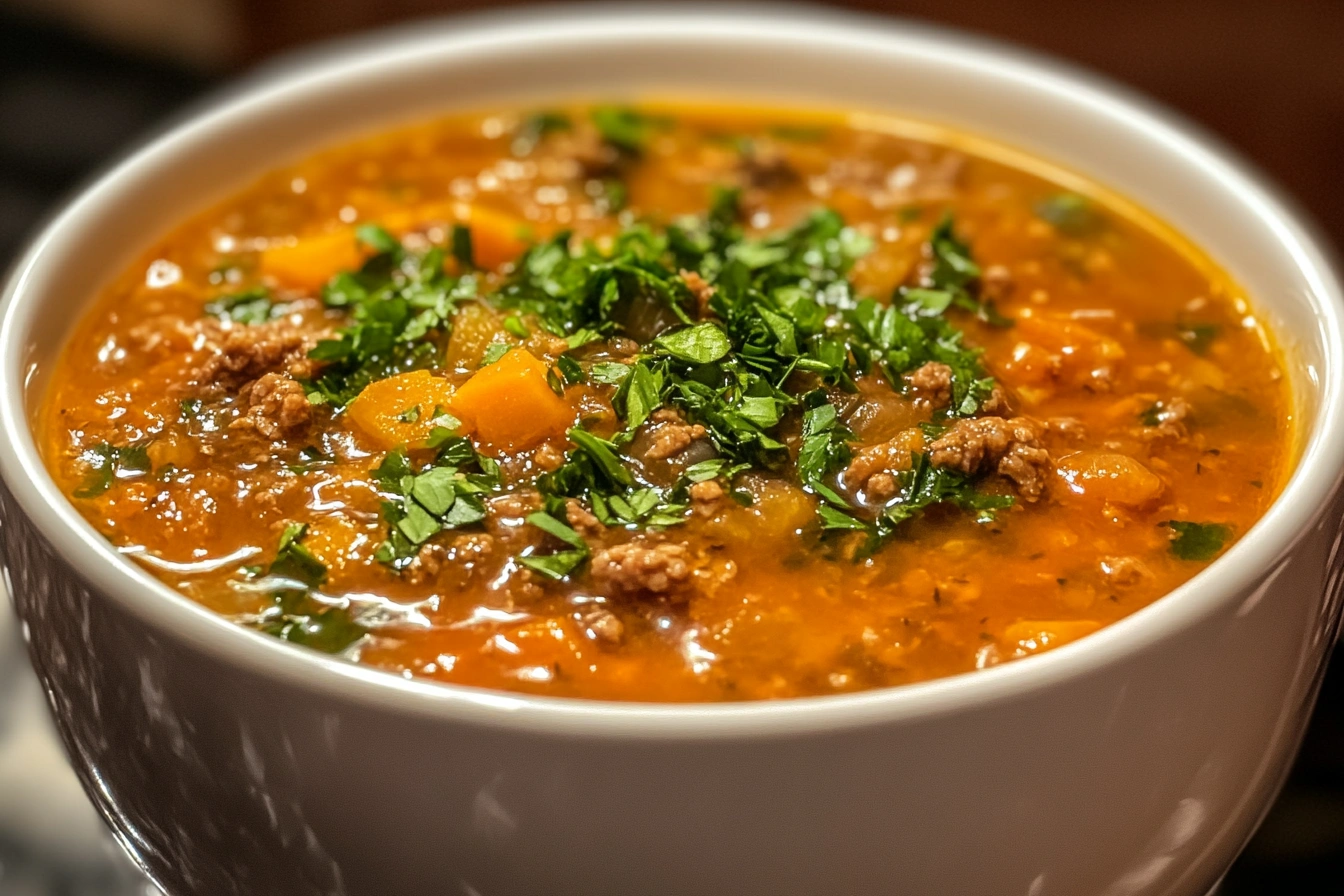Understanding Noodle Substitutes in Soup
Introduction to Noodle Substitutes in Soup
Noodles are a staple ingredient in many soups, but some people look for alternatives due to dietary preferences, health goals, or lifestyle choices. Traditional noodles, such as wheat-based pasta or egg noodles, can be high in carbohydrates and gluten, making them unsuitable for low-carb, gluten-free, or keto diets. Others seek alternatives to increase protein, fiber, or nutrient content in their meals.
Replacing noodle in soup doesn’t mean sacrificing flavor or texture. There are a variety of vegetable-based, grain-based, and protein-rich alternatives that offer unique tastes and textures while complementing the broth. Popular options include zucchini noodles (zoodles), spaghetti squash, quinoa, and shirataki noodles.
Whether you’re looking for a lighter, more nutritious option or need an alternative due to dietary restrictions, there are plenty of creative substitutes available to make your soup delicious, satisfying, and health-conscious.
Table of Contents
Key Factors When Choosing a Noodle Substitute
When replacing noodle in soup, it’s important to consider texture, flavor absorption, nutritional value, and dietary compatibility. The best substitute will depend on personal taste, cooking method, and dietary needs.
1. Texture: Ensuring a Satisfying Bite
- Vegetable-based substitutes like zucchini noodle and spaghetti squash provide a slightly firm, noodle-like texture.
- Grain-based options such as quinoa or barley offer a chewy, hearty feel.
- Protein-rich choices like tofu strips and egg drop swirls add softness while enhancing the soup’s nutrition.
2. Flavor Absorption: How Different Substitutes Soak Up the Broth
- Grains (quinoa, rice, barley) absorb flavors well and complement rich broths.
- Vegetables (zucchini, cabbage, spaghetti squash) take on the soup’s seasonings without overpowering them.
- Low-carb options (shirataki noodle, konjac noodles) have a neutral taste but soak up surrounding flavors.
3. Nutritional Benefits: Finding Alternatives Rich in Fiber, Protein, and Vitamins
- Legume-based options (chickpeas, lentils) are high in protein and fiber.
- Leafy greens or seaweed strips provide vitamins and minerals while adding a unique twist.
4. Dietary Considerations: Best Options for Low-Carb, Gluten-Free, Keto, and Paleo Diets
- Low-carb/Keto: Shirataki noodles, zucchini noodles, cauliflower rice.
- Gluten-Free: Rice, quinoa, spaghetti squash.
- High-Protein: Chickpeas, lentils, tofu.

Best Noodle Alternatives for Soup
Vegetable-Based Noodle Substitute
Vegetable-based noodles are an excellent substitute for traditional pasta in soup, offering low-carb, nutrient-dense, and flavorful options. These alternatives enhance the color, texture, and taste of the soup while keeping it light and healthy.
Zucchini Noodle (Zoodles): Light, Low-Carb, and Easy to Prepare
Zoodles are spiralized zucchini strands that resemble noodles in texture but are low in carbs and calories. They cook quickly and absorb the broth well without becoming mushy.
Spaghetti Squash: Mild in Flavor and Mimics Pasta Strands
When cooked, spaghetti squash forms stringy strands that mimic traditional noodles. It has a neutral taste, making it perfect for absorbing flavors from the broth.
Carrot & Sweet Potato Noodles: Slightly Sweet, Packed with Nutrients
- Carrot noodles add a slightly sweet, crisp bite and are rich in beta-carotene.
- Sweet potato noodles have a soft, chewy texture that holds up well in brothy soups.
Cabbage Strips: Soft but Slightly Crunchy, Adding Texture
Thinly sliced cabbage softens slightly in soup but retains some crunch, adding texture and a hint of natural sweetness.
These vegetable-based alternatives are perfect for anyone looking to add extra nutrients and fiber while keeping their soup light and satisfying.
Grain-Based Substitutes for Noodle
For those who want a heartier soup without traditional noodles, grain-based alternatives provide a chewy, satisfying texture while soaking up the broth’s rich flavors.
Quinoa: A High-Protein, Gluten-Free Alternative
Quinoa is a small, fluffy grain packed with protein and fiber. It absorbs flavors well and is naturally gluten-free, making it a great alternative for those avoiding wheat-based noodles.
Brown Rice: Absorbs Flavors Well While Adding Heartiness
Brown rice is chewy, slightly nutty, and holds up well in soups. It thickens the broth slightly and provides a wholesome, filling option.
Barley: Chewy and Great for Thick Soups
Barley has a pleasant chewiness and works best in heartier, stew-like soups. It contains fiber, vitamins, and minerals, making it a nutrient-dense alternative.
Farro: Nutty-Flavored and Protein-Rich
Farro is an ancient whole grain with a nutty taste and chewy texture. It absorbs flavors beautifully and adds a rustic feel to soups.
Grain-based substitutes are great for those who want a comforting, filling alternative while still enjoying the richness of traditional soup recipes.
Protein-Rich Noodle Alternatives
For those looking to increase protein content while replacing noodles, these options provide plant-based and animal-based proteins that enhance the nutritional profile of soups.
Chickpeas & Lentils: Provide Plant-Based Protein and Fiber
- Chickpeas (garbanzo beans) are firm, slightly chewy, and add protein and fiber.
- Lentils (green, brown, or red) soften in soup, thickening the broth while adding earthy, hearty flavors.
Tofu Strips: Soft but Firm Enough to Replace Noodle
Tofu can be cubed, sliced, or shredded to mimic the texture of noodles. It absorbs the broth’s flavors and provides a great source of plant-based protein.
Egg Drop Swirls: A Great High-Protein, Low-Carb Option
By whisking eggs and slowly pouring them into hot broth, you create delicate egg ribbons similar to thin noodles. This is a great low-carb, high-protein option, commonly found in Asian soups.
These protein-rich substitutes not only replace noodles but also make soups more balanced and nutritious, ensuring you stay full longer.
Low-Carb & Keto-Friendly Noodle Replacements
For those following low-carb or keto diets, traditional pasta is not an option, but there are several noodle alternatives that fit within these dietary guidelines.
Shirataki Noodles (Konjac Noodles): Virtually Carb-Free, Gelatinous Texture
Made from konjac root, shirataki noodles are low-calorie, almost carb-free, and have a slightly gelatinous texture. They absorb flavors well but should be rinsed and lightly sautéed before adding to soup to remove their natural odor.
Enoki Mushrooms: Long, Thin, and Chewy, Resembling Noodles
Enoki mushrooms are delicate and stringy, mimicking the shape and texture of noodles. They cook quickly and add a subtle, slightly crunchy bite.
Cauliflower Rice: Light, Grainy, and Absorbs Broth Well
Riced cauliflower is a great low-carb substitute that adds texture while absorbing the soup’s flavors. It provides fiber, vitamins, and a mild, neutral taste.
These keto-friendly alternatives allow you to enjoy hearty, comforting soups while staying within low-carb dietary limits.
Creative Noodle Substitutes & Cooking Tips
Using Legumes & Beans Instead of Noodle
Legumes and beans make excellent high-protein, fiber-rich alternatives to noodles in soup. They add texture, nutrition, and heartiness without overpowering the dish.
Black Beans: Dense and Chewy, Adding Protein
- Black beans have a firm, meaty texture that holds up well in soup.
- They provide protein, fiber, and antioxidants, making them a great substitute for pasta.
- Best in Mexican-style soups, spicy broths, and tomato-based stews.
Green Peas: Sweet, Light, and Perfect for Brothy Soups
- Green peas have a naturally sweet flavor that pairs well with delicate broths.
- They cook quickly and add a bright pop of color and nutrition.
- Works well in chicken soup, vegetable broth, and light miso soups.
Edamame: High in Protein and Slightly Nutty
- Edamame (young soybeans) adds a mild, nutty taste and a chewy texture.
- It’s rich in plant-based protein and essential amino acids.
- Best in Asian-inspired soups, miso broth, and ramen-style dishes.
Using legumes in place of noodles creates a satisfying, protein-packed soup while keeping it gluten-free and nutrient-dense.
Creative Substitutes for a Unique Soup Experience
For a fun twist on traditional soup recipes, try these creative, unexpected noodle substitutes that add texture and complexity to your dish.
Seaweed Strips: Thin, Chewy, and Rich in Minerals
- Nori or wakame seaweed strips add a chewy, noodle-like consistency.
- They provide natural umami flavor and essential minerals like iodine.
- Best in Asian broths, seafood soups, and miso-based dishes.
Eggplant Slices: Absorbs Broth Like Pasta
- Thinly sliced eggplant soaks up flavors like traditional noodles.
- It has a soft, slightly chewy texture when simmered in broth.
- Works well in tomato-based soups, Mediterranean stews, and miso ramen.
Shaved Brussels Sprouts: Light and Slightly Crispy
- Finely shaved Brussels sprouts soften slightly but retain a delicate crunch.
- They add a mild, nutty flavor and pair well with brothy soups.
- Great in chicken broth, vegetable soup, and cream-based stews.
These unique substitutes add depth, texture, and nutrition, making your soup more interesting and flavorful.

Cooking Tips for the Best Noodle Substitutes
Replacing noodles with vegetables, legumes, or grains requires proper cooking techniques to maintain texture and flavor.
1. How to Cook Vegetables Properly to Maintain Texture
- Zucchini, cabbage, and leafy greens should be added in the last 5 minutes to prevent over-softening.
- Root vegetables like carrots and sweet potatoes should be pre-cooked slightly before adding to broth.
2. When to Add Different Substitutes to Prevent Overcooking
- Shirataki noodles and enoki mushrooms should be rinsed and added just before serving.
- Legumes like chickpeas and lentils need at least 20-30 minutes of simmering.
3. Balancing Flavors When Using Grain-Based or Legume Alternatives
- Add herbs, spices, and umami boosters (miso, soy sauce, or nutritional yeast) to enhance depth.
- If using sweet vegetable substitutes (carrots, sweet potatoes, squash), balance with savory ingredients like garlic and onions.
FAQs – People Also Ask Section
Common Questions Answered
1. What is the best noodle substitute for soup?
The best noodle substitute depends on your dietary needs and texture preferences. Zucchini noodles (zoodles), spaghetti squash, and shirataki noodles are great low-carb and gluten-free options. Vegetable-based noodles absorb broth well while keeping the dish light and nutritious.
2. Can I replace pasta with grains in soup?
Yes! Grains like quinoa, brown rice, barley, and farro work well in soups. They add fiber, protein, and a hearty texture, making the soup more filling. Quinoa and rice are great for gluten-free diets, while barley and farro provide a chewy consistency similar to pasta.
3. What are the best keto-friendly noodle substitutes?
For a low-carb or keto-friendly soup, the best substitutes include:
- Shirataki noodles (konjac noodles) – Nearly zero carbs and a firm texture.
- Enoki mushrooms – Long, thin mushrooms that resemble noodles.
- Cauliflower rice – A great alternative that absorbs broth well without adding carbs.
4. How do I make soup filling without noodle?
To make your soup hearty and satisfying, try adding:
- Beans and lentils for protein and fiber.
- Tofu or tempeh for a plant-based protein boost.
- Root vegetables (sweet potatoes, turnips, parsnips) to add natural sweetness and bulk.
5. What is the best gluten-free alternative to noodle?
For a gluten-free soup, the best options include:
- Rice (white or brown) – A classic choice that absorbs broth well.
- Quinoa – A high-protein grain with a fluffy texture.
- Chickpeas and lentils – Provide a hearty, protein-packed alternative.
- Spiralized vegetables (zucchini, carrots, or sweet potatoes) – Light, fresh, and naturally gluten-free.

